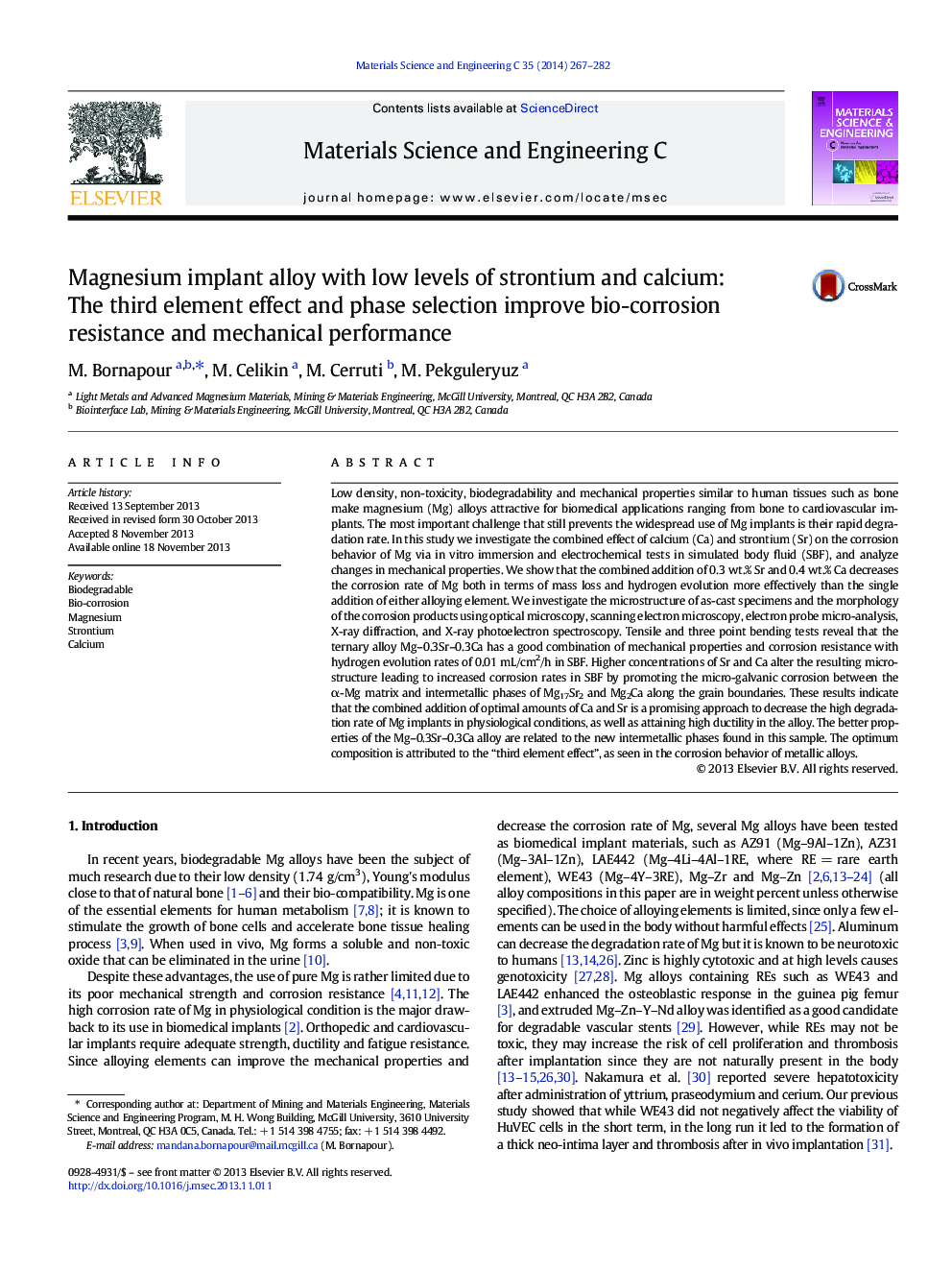| Article ID | Journal | Published Year | Pages | File Type |
|---|---|---|---|---|
| 7870338 | Materials Science and Engineering: C | 2014 | 16 Pages |
Abstract
Low density, non-toxicity, biodegradability and mechanical properties similar to human tissues such as bone make magnesium (Mg) alloys attractive for biomedical applications ranging from bone to cardiovascular implants. The most important challenge that still prevents the widespread use of Mg implants is their rapid degradation rate. In this study we investigate the combined effect of calcium (Ca) and strontium (Sr) on the corrosion behavior of Mg via in vitro immersion and electrochemical tests in simulated body fluid (SBF), and analyze changes in mechanical properties. We show that the combined addition of 0.3 wt.% Sr and 0.4 wt.% Ca decreases the corrosion rate of Mg both in terms of mass loss and hydrogen evolution more effectively than the single addition of either alloying element. We investigate the microstructure of as-cast specimens and the morphology of the corrosion products using optical microscopy, scanning electron microscopy, electron probe micro-analysis, X-ray diffraction, and X-ray photoelectron spectroscopy. Tensile and three point bending tests reveal that the ternary alloy Mg-0.3Sr-0.3Ca has a good combination of mechanical properties and corrosion resistance with hydrogen evolution rates of 0.01 mL/cm2/h in SBF. Higher concentrations of Sr and Ca alter the resulting microstructure leading to increased corrosion rates in SBF by promoting the micro-galvanic corrosion between the α-Mg matrix and intermetallic phases of Mg17Sr2 and Mg2Ca along the grain boundaries. These results indicate that the combined addition of optimal amounts of Ca and Sr is a promising approach to decrease the high degradation rate of Mg implants in physiological conditions, as well as attaining high ductility in the alloy. The better properties of the Mg-0.3Sr-0.3Ca alloy are related to the new intermetallic phases found in this sample. The optimum composition is attributed to the “third element effect”, as seen in the corrosion behavior of metallic alloys.
Related Topics
Physical Sciences and Engineering
Materials Science
Biomaterials
Authors
M. Bornapour, M. Celikin, M. Cerruti, M. Pekguleryuz,
